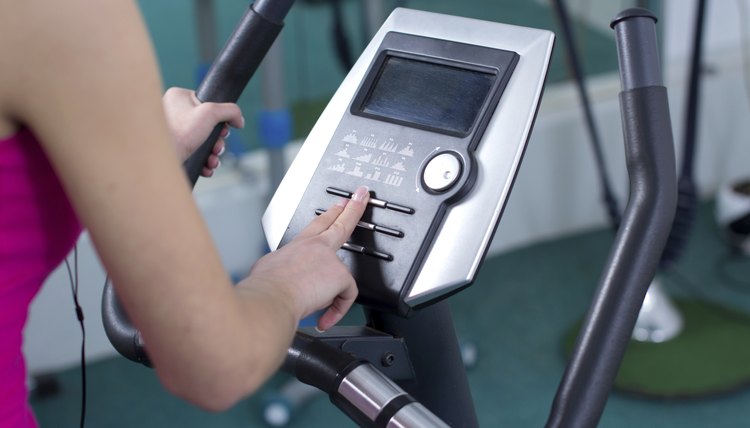Elliptical Forward vs. Reverse for Muscles

The elliptical machine offers a low-impact alternative to treadmills and stair climber machines. Working out on an elliptical trainer puts less stress on knee and hip joints than running or walking on a treadmill. The elliptical machine works a range of muscles in the legs. Depending on whether you pedal forward or reverse on the machine, you can emphasize different muscles. Alternate between pedaling forward and in reverse to work all your leg muscles in one workout.
Quadriceps
Pedaling backward on the elliptical emphasizes the rectus femoris muscle. This muscle belongs to the quadriceps muscle group in the front of the thigh.
Hamstrings
Pedal forward to emphasize the bicep femoris muscle, part of the hamstring muscle group at the back of the thigh.
Gluteus Maximus
You can work out the gluteus maximus muscles in the butt by pedaling either forward or backward. A study by the American Society of Biomechanics suggests that the greater the incline at which you pedal, the more you will emphasize this muscle.
Calves
A study by the American Society of Biomechanics found that activity in the gastrocnemius muscle in the calf varied relatively little depending on the direction the subjects pedaled on the elliptical. You work the calf muscles by pedaling both forward and backward on the elliptical.
Arms
Many elliptical machines allow you to work your arms as well as your legs by pushing or pulling on ski poles or similar extensions. You can work your arms while pedaling forward or in reverse.
Abdominal Muscles
When you maintain proper upright posture on the elliptical machine, you naturally engage your core muscles. Thus, the abdominal muscles work as stabilizing muscles during an elliptical workout. The elliptical machine does not target these muscles specifically, but regular exercise on the machine can help to strengthen them.
References
- University of Wisconsin: Elliptical—Forward vs. Backward
- Paquette M, Zucker-Levin A, DeVita P, Hoekstra J, Pearsall DJ. Lower Limb Joint Angular Position and Muscle Activity During Elliptical Exercise in Healthy Young Men. J Appl Biomech. 2014;31(1):19-27. doi:10.1123/jab.2014-0105
- National Osteoporosis Foundation. Exercise/Safe Movement. 2020.
Writer Bio
Lisa Porter began writing professionally in 2009. She writes for various websites and has a Bachelor of Arts in English literature.
